Round downpipe roll forming machinery automatically produces hollow cylindrical or oval metallic pipe and tube sections from coiled metal strip stock. Compared to manual bending or welding fabrication, downpipe roll forming allows faster production of precision spiral lockseam ducting for heating, ventilation and air conditioning (HVAC) usage across residential or commercial construction projects.
This guide details working features, capabilities, customization options, installation factors, operations best practices, maintenance schedules and cost considerations around downpipe roll forming lines including specification pros/cons comparisons against alternate pipe forming approaches.
Overview of Round Downpipe Roll Forming Machines
Round downpipe roll forming refers to continuously spiral winding flat rolled steel or aluminum coils into 3-dimensional seam lock drainage pipes or oval ducting used extensively across infrastructure sectors. Automated downpipe roll forming delivers high consistency, faster volumes, reduced labor and lower costs once configured for specific metallic pipe dimensions.
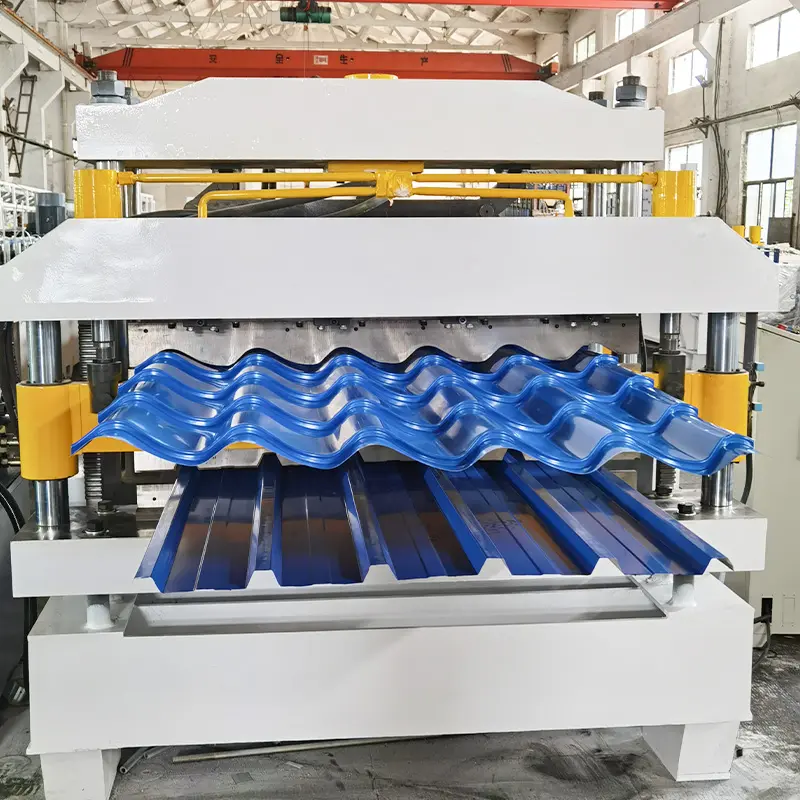
Types of Round Downpipe Roll Forming Equipment
| Type | Description |
|---|---|
| Standard | Basic feed-to-exit forming with manual offload |
| Servo Motor | Precision programmable independently driven stations |
| Double Profile | Twinned lines for complex multi-layer composite pipes |
| Vertical | Floor space saving gravity type production |
| Positioning Tables | Automated exit handling and packing |
- Standard machines start around $35,000 delivering up to 80 meters per hour
- Servo rollers with independent AC vector drives offer speed/torque responsiveness
- Double profile systems shape multi-layer and insulation lined ducting
- Vertical orient assist downstream finishing and cutting
- Positioning tables automate sorted offloading for higher volumes
With massive global demand visible for essential rainwater drainage infrastructure across expanding construction and renovation builds, appropriately automated downpipe roll forming equipment future proofs resilient HVAC component supply capacity.
Working Principle Behind Downpipe Roll Forming
The round downpipe roll forming principle utilizes a spiral winding process for continuously transforming flat strip stock into hollow locked multi-turn pipes:
Steps:
- Decoiler strip fed into start of roller centering wheels
- Initial profiling rollers bend sides curving material
- Successive stations close gap incrementally
- Wrapper contours exterior into round profile
- Finishing rolls interlock edges into spiral seam
- Travel cut-off saw slices pipe into set lengths
- Exit conveyors assist offloading
Key Components:
- ডিকয়লার rolling mechanism with pinch drive release
- Guiding rollers auto-centering and straightening
- Formation rollers in groups of 4-16 for gradual bending
- Cutting saw unit with hydraulic clamping vise
- **Supporting rollers ** prevent mid-process buckling
- Bead roller for reinforcing lock seam tightly
Combining robust spiral winding machinery with efficient in-line flying shears cutting allows versatile high volume fabrication of hollow locked round metallic ducting used extensively across residential and commercial rainwater disposal applications.
Features and Capabilities
Specifying automated downpipe roll formers depends firstly on desired diameter followed by production speed:
| Parameter | Typical Specifications |
|---|---|
| Material Thickness | 0.4mm to 2mm metal gauge |
| Strip Width | 100mm to 300mm uncoiled range |
| Diameters | 50mm to 300mm diameter |
| Production Rate | 10m to 80m per hour |
| Roller Adjustability | Easy runout compensation |
| Bead Reinforcing | Adds leakproof strength |
| Positioning | Centering auto-pilot guide wheels |
| Power Rating | 7.5kw to 15kw main drive |
- Floor mounted machines with rigid chassis construction
- Programmable PLC automation for ease of operation
- Robust slip-proof rubber covered rollers gripping strip
- Modular upgrading available from entry reels to servo feeds
- Twin-head cutting allows 24/7 lights out production
Covering drainage ducting needs from residential gutter downspouts to industrial chimney flues, today’s high speed automated downpipe roll forming technology offers upgraded manufacturing approaches replacing legacy manual spiral winding or welding fabrication.
Round Downpipe Customization Capabilities
To serve range of rainwater removal infrastructure sectors, drained pipes offer differentiated specs:
Materials: Galvanized Steel, Aluminum, Stainless Steel, Copper Diameters: 50mm to 600mm ranges Gauges: 0.4mm to 35mm metal thicknesses Finishes: Precoated enamels, epoxy coatings, pebble grain
Reinforcing: External side bead ribs, drainage studs Performance: Flow rate efficacy, pressure testing, flood proofing Hardware: Integrated threaded inserts, pre-punched hanging brackets Testing: Hydrostatic head height validation, joint integrity
Such versatility allows creating customized metallic downspouts and oval ducting meeting project performance requirements across stormwater drainage parameters vital for architects, civil engineers and plumbing consultants.
-
 বৈদ্যুতিক মন্ত্রিসভা ফ্রেম রোল গঠনের মেশিন
বৈদ্যুতিক মন্ত্রিসভা ফ্রেম রোল গঠনের মেশিন -
 দিন রেল রোল ফর্মিং মেশিন
দিন রেল রোল ফর্মিং মেশিন -
 তারের মই রোল ফর্মিং মেশিন
তারের মই রোল ফর্মিং মেশিন -
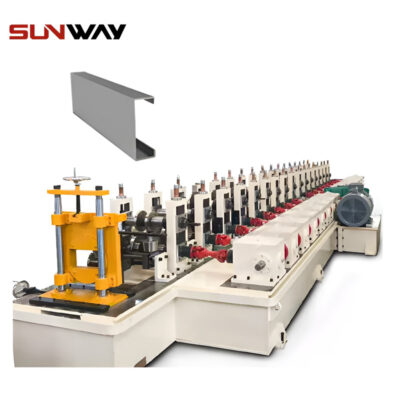 পিভি মাউন্টিং বন্ধনী সি শেপ প্রোফাইল রোল ফর্মিং মেশিন
পিভি মাউন্টিং বন্ধনী সি শেপ প্রোফাইল রোল ফর্মিং মেশিন -
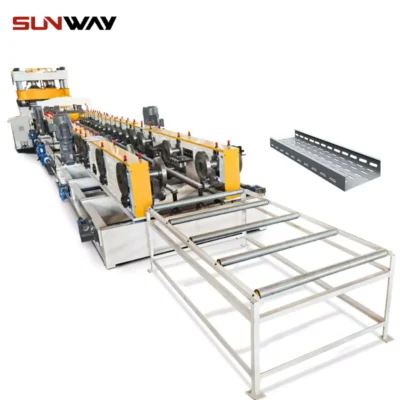 তারের ট্রে রোল ফর্মিং মেশিন
তারের ট্রে রোল ফর্মিং মেশিন -
 পিভি মাউন্টিং ব্র্যাকেট রোল ফর্মিং মেশিন (HAT / ওমেগা প্রোফাইল)
পিভি মাউন্টিং ব্র্যাকেট রোল ফর্মিং মেশিন (HAT / ওমেগা প্রোফাইল) -
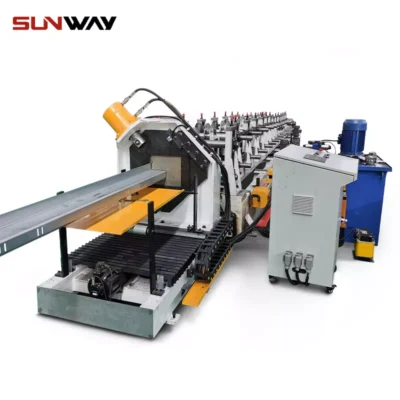 পিভি মাউন্টিং বন্ধনী জেড শেপ প্রোফাইল রোল ফর্মিং মেশিন
পিভি মাউন্টিং বন্ধনী জেড শেপ প্রোফাইল রোল ফর্মিং মেশিন -
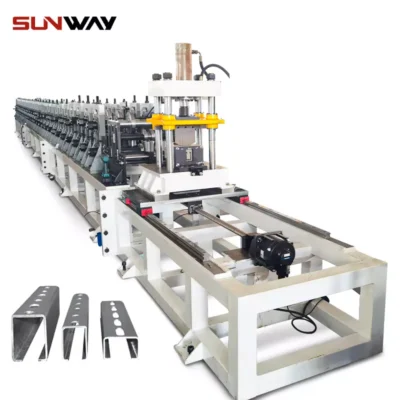 সোলার মাউন্টিং স্ট্রট চ্যানেল রোল তৈরির মেশিন
সোলার মাউন্টিং স্ট্রট চ্যানেল রোল তৈরির মেশিন -
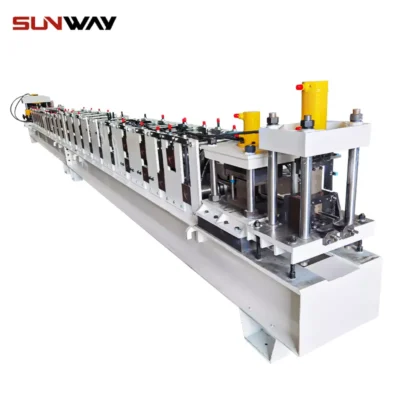 স্ট্রুট চ্যানেল রোল ফর্মিং মেশিন
স্ট্রুট চ্যানেল রোল ফর্মিং মেশিন
Leading Global Round Downpipe Machinery Suppliers
| Manufacturer | Location | Product Series |
|---|---|---|
| ECOFORM | Turkey | ERFS range |
| FD Machinery | China | FRV models |
| Fujian GaoTong | China | FGRF lines |
| Future Hi-tech | China | FRHC equipment |
| Anhui Tongxing | China | TXR machines |
- ECOFORM focuses on spiral ducting and rainware fabrication
- FD Machinery offers fully automatic model configurations
- Fujian GaoTong provides turnkey factory layout commissioning
- Future Hi-tech specializes in ventilation industry fabrication
- Anhui Tongxing is a machinery technology trading company
Factory trained personnel assist system configuration aligning production volumes, material specifications, secondary treatment needs and budgets into optimized factory footprints leveraging sequential workflow efficiencies. Most manufacturers also offer compatible slitting cutters, packing presses and offline paint finishing booths.
Round Downpipe Roll Forming Cost Considerations
| Expense | Typical Range |
|---|---|
| Capital Equipment | $35,000 to $250,000 |
| Tooling Fabrication | $1500+ per customized roller set |
| Facility Space | 2500+ sq ft covered |
| Safety Guarding | $2000+ for light curtains |
| Consumables | Decoiler lubricants, coolants |
| Technician Labor | $15 per hour approx |
| Utility Bills | Electrical consumption |
| Maintenance | 2%+ of capital value per year |
Therefore downpipe roll form machinery cost estimation requires tallying likely monthly production targets, operational overheads, logistics and preventative maintenance factors. By balancing throughput against realistic warehousing constraints and shipping frequencies, optimized factory capacities can be strategized factoring expansion.
Installation and Site Preparation
Deploying round downpipe roll forming equipment needs suitable facilities:
- Level concrete floors for anchoring 6 tons/sqm presses
- 3000 sq ft of covered workspace with 4m minimum ceiling height
- 480V 3-phase electrical supply with 200kVA transformer provision
- Compressed air lines routed to punch or saw actuation cylinders
- Fume extraction ducting around pipe cutting saws
- Secured rainwater component buffer for weeklong production
- Forklift accessible coil loading docks or cranes
Adequate logistics movement planning for piping allows organizing uninterrupted flow of sequential fabrication processes from raw input materials to pre- dispatch buffer warehousing zones.
Careful foundation alignment ensures avoiding gradual roller misalignment over years from floor settlement variation across machinery train length.
Operations and Best Practices
Standardized protocols aid consistent downpipe quality:
- Monitoring strip alignment, lockseam closure and diameters
- Automated ultrasonic seam testing validation checks
- Software aided manufacturing guiding tooling wear compensation
- Line changeover SOP adherence for rapid configurations
- Protecting feed stock coils against moisture with wrapping
- Isolating fine metal chip generation debris through filtration
- Interlocked guard door sequencing integrating safety
- Planned maintenance replacing worn forming rollers
Such production protocols ensure achieving reliable volume targets, quality consistency and safety during 24/7 high utilization factory working.
Maintenance Guidelines
Preventative servicing sustains performance:
Daily: Decoiler runout and strip entry inspection; Tooling observation; testing downstream pipe roundness and spiral integrity; Clearing metal fines
Weekly: Verify pipe production consistency across batches; First-off piece approvals prior to manufacturing runs; Coolant filter cleaning; Backup control recipes
Monthly: Water wash cleaning of accumulated production lubricants around rollers; Calibrate proximity sensors; grease bearings, screws and clamps
Quarterly: Hydraulic oil filtration efficacy testing; Inspect clutch pad thicknesses; Overhaul pressure regulators
Yearly: Check cylinder barrel chrome wear patterns; Replace hydraulic seals/gaskets; Audit electrical safety cutouts; Tighten anchor foundation bolts
While high duty cycles accelerate both mechanical and wear item lifecycles, adhering to prescribed preventative servicing best practices evaluated during maintenance allows maximizing production availability between failures.
Comparing Pros and Cons of Roll Forming Pipes
Advantages of Automated Downpipe Lines:
- 90% faster fabrication than manual bending or welding
- 85% improved diameter precision consistency
- 70% labor cost savings from automated operation
- Low, predictable per foot expenses favorable at volumes
- Safer machinery work than manual fabricating
- Minimal custom tooling costs for design changes
- Storage space savings using compact coils vs framing
Limitations Include:
- High initial capital budget allocation
- Production stoppages needing planned maintenance
- Size limitations constrained by dimension envelopes
- Safety risks from fast rotating equipment
- Oil leaks requiring constant containment
- Staff skill ramp up requires training time
- Periodic foundation anchoring needing verification
Realistically determining metrics spanning operational budgets, likely monthly throughputs and configuring modular line layouts allows maximizing productivity returns on pipe roll forming machinery investments.
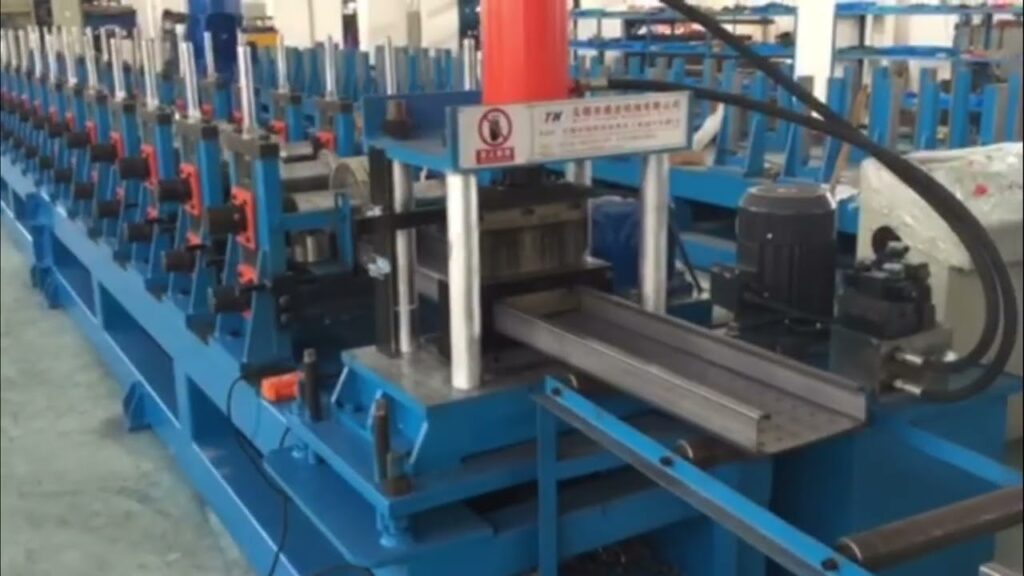
Future Round Downpipe Roll Forming Innovations
Emerging improvements include:
Fabrication: Additive hybridization with printing tack welds before spiral winding; RFID traceability tracking pipe segments
Materials: Composite sandwiches; interlocking snap-fit connectors; plastic or non-metal alternatives; nano-ceramic lubricious coatings
Analytics: Overall equipment effectiveness metrics quantifying bottlenecks; Video assisted recognition improving quality controls; predictive asset maintenance
Automation: Machine learning optimization of spiral winding tension and speeds; robotic packing; progress tracking using digital twins
Controls: Worker assistive wearables visually guiding sequential procedures; Remote monitoring apps
Safety: Alert wearables mandating operator step confirmations; Contactless guard position sensors
উপসংহার
Round downpipe high speed roll forming machinery automates mass fabrication of hollow locked spiral ducting and drainage pipes combining versatility, precision diameter consistency and safety otherwise challenging to achieve manually. Configuring modular standard or servo controlled roll stations factoring likely vertical rise building construction growth rates allows appropriately future proofing production capacity investments right sized for both current and projected regional infrastructure demands. By adopting standardized operating procedures and preventative maintenance disciplines, round downpipe roll form lines sustain responsive supply chains supporting surging global residential and industrial rainwater disposal needs.
